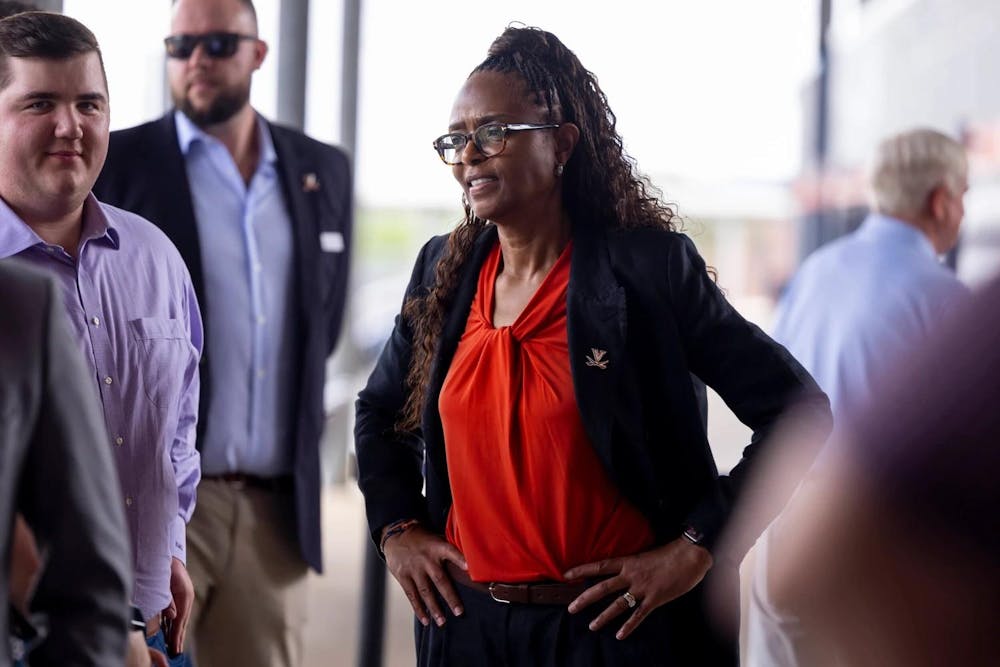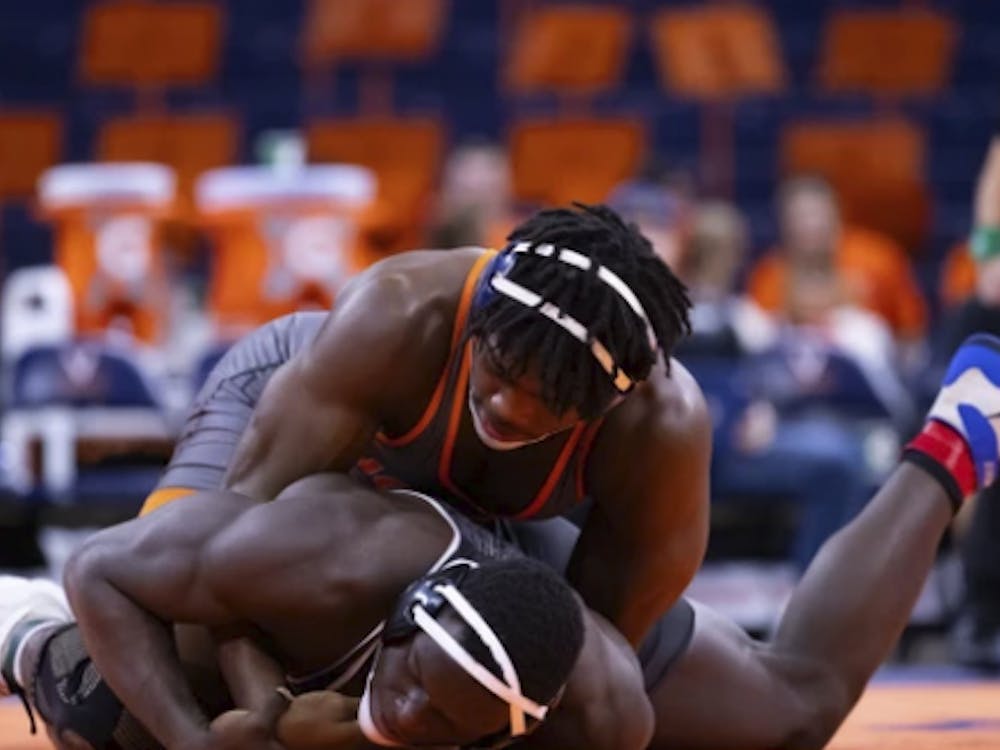Athletic Director Carla Williams stood amid a press gaggle Wednesday, orange and blue balloons behind her, after another coronation for a new head coach. For just the second time in the last three months, she spoke to the media.
And for the second time, even as reporters asked about new baseball Coach Chris Pollard, another line of questioning intruded. This time even more pronounced than before.
Yes, Williams said. She was pleased — “ecstatic,” actually — with the House v. NCAA settlement that gained final approval June 6, establishing revenue sharing, scholarship expansion and name, image, likeness (NIL) regulations after months of chatter.
No, she said, her athletic department had not yet ironed everything out. But it was getting there.
This is the settlement that has cast a shadow over college athletics, looming, since it started moving rapidly a little over a year ago. Its most foundational impact is establishing direct payments from schools to players, known as revenue sharing. Schools will be able to pay athletes up to $20.5 million this school year, and more beyond that as the payment cap increases annually.
The settlement’s other sasquatch-sized footprint is its attempt to regulate NIL. Such deals had not, since they began in 2021, faced any scrutiny. But the settlement fashions a clearinghouse called NIL Go. All deals over $600 must go through the clearinghouse to ensure they meet market value.
Beyond that, the settlement disposes of scholarship limits, imposing roster caps instead. The scholarship limits, and the impending shifting of scales when some schools create more scholarships than others, has been a source of particular consternation among coaches.
Pollard, for one, said he has spent a year discussing the settlement with other coaches, the scholarship situation in particular.
“Hey, where are you guys going to land after the settlement?” one coach would ask.
“I don’t know, where are you guys gonna land?” went the response.
For two years, Virginia has been preparing. Williams said as much in a June 12 update posted to the athletics website and social media, projecting the same confidence in the settlement she did after basketball Coach Ryan Odom’s introductory press conference in March, the last time she spoke to the media. She said much the same Wednesday.
“[I am] very optimistic that this settlement is going to stabilize our industry,” Williams said. “There will always be changes. Because we’re going to a place. We’re not there yet, but I feel really good.”
In preparation, Virginia invested in facility updates, opening the Hardie Football Operations Center in June 2024 and the Harrison Family Olympic Sports Center this September, state-of-the-art headquarters for the football team and Olympic sports programs.
Virginia also focused on fundraising, college sports’ new open-air arms race. Virginia Athletics Foundation, the athletic department’s fundraising arm, raised $15.76 million in May, its largest May total ever. The foundation is up 71 percent from last year so far.
“Our donors have been phenomenal,” Williams said Wednesday.
Most of the money will funnel toward revenue sharing. Virginia will distribute the maximum allowable, Williams wrote in her update.
But it has not yet decided how to divvy up the money, she added Wednesday. The department will decide whether to devise its own algorithm or follow the 75-15-5-5 model becoming the industry standard — 75 percent for football, 15 percent for men’s basketball, 5 percent for women’s basketball and 5 percent for other sports.
Of the $20.5 million, $2.5 million will go toward new scholarships, according to Lo Davis, the executive director of Cav Futures, under a clause in the settlement that says the first $2.5 million will count toward the revenue sharing cap. Virginia has created 30 new scholarships so far in women’s sports, Williams said.
The fundraising race is on, and that is nothing new. Its stage has just shifted.
Fundraising is more important than ever for athletic departments, where scholarships and revenue sharing are concerned. But NIL collectives, the organizations that have sprung up over the last few years at every school to fund athletes’ NIL opportunities, shifted overnight away from fundraising.
Cav Futures, the University’s official NIL collective, is “out of the fundraising business” and “into the sponsorship business,” Davis said in an interview Friday.
“We're basically moving away from fundraising to fully marketing and sponsorships,” Davis said. “And so instead of having donor outreach, we're now looking at opportunities to work with local, regional and national businesses.”
Davis is unsure exactly how the clearinghouse will look. Questions abound, mostly about how one actually determines market value.
But for most, there is no question — no matter where they fall on the spectrum of skepticism — that this is a step in the right direction. At least from what came before.
“It was a donor-centric model,” Davis said. “There were some collectives who did it the right way, like us, in terms of creating opportunities for the student-athletes so they earned what they got. But then there were others who just basically had the Venmo account directly to the student-athlete.”
Now, it is a world of “true NIL,” as Davis calls it. It is about brands and sponsors, about facilitating deals, educating athletes, helping them build their personal brands.
Davis thinks it will take about a year to understand the market. It will be a little bit of trial and error until then. Before they submit deals to the clearinghouse, Virginia athletes will send their deals to the school’s compliance department for review.
“They can't dictate to the student-athlete what their value is,” Davis said. “But they certainly would say, ‘This may not pass. You may want to go back and renegotiate the scope of work for the value that they're giving you.’”
It is uncertain for everybody. For the first time since NIL launched in 2021, the playing field, from a governance and regulation standpoint, is level.
Which schools can maximize the new landscape? That is the question of the day.
Virginia, being in a smaller market, is at a disadvantage to big-city schools. But Davis points to existing partnerships with McDonald’s and Hilldrup, and he is looking to expand into Richmond and Lynchburg, and to Northern Virginia, to use the school’s vast and successful alumni base.
NIL Go opened June 11. Revenue sharing starts July 1. It is all moving fast now, after Virginia’s two years of bracing for change, and the school is embracing it.
“Change is going to be a normal part of college athletics moving forward, and you just have to see it as an opportunity,” Williams said. “You cannot see it as a loss or as a negative.”
Still, everyone is in wait-and-see mode.
“Let's see what happens 60 days from now,” Davis said. “I think it's not where fireworks are going to happen July 1. I think it's going to be a ramping up period. Obviously, school doesn't start until August, so I think we'll see how this all plays out by October.”
Xander Tilock contributed reporting.







